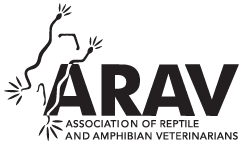Method Comparison and Reference Intervals of β-Hydroxybutyric Acid Measurements by Using a Veterinary Point-of-Care Ketone Meter and a Reference Laboratory Analyzer in Central Bearded Dragons (Pogona vitticeps)
Hepatic lipid accumulation is highly prevalent in managed central bearded dragons (Pogona vitticeps), and standard blood biomarkers have proven ineffective for its diagnostic management. Recently, the ketone β-hydroxybutyrate (BHBA) has demonstrated potential in association with the severity of hepatic lipid accumulation in this species. Because BHBA measurement is not readily available to veterinary practices, the purpose of this study was to perform a method comparison assessment between a veterinary handheld point-of-care (POC) ketone meter (NovaVet Ketone/Glucose Meter, Nova Biomedical, Waltham, MA, USA) and a reference laboratory wet-chemistry analyzer (Ortho-Vitros 5600 Analyzer, QuidelOrtho, San Diego, CA, USA). Forty-four adult bearded dragons of both sexes were sampled, and BHBA concentrations were obtained using both analyzers. The veterinary POC ketone meter was found to underestimate BHBA values, with a significant proportional bias. The total observed error was higher than the combined inherent imprecision of the analyzers, but lower than the total allowable error for clinical agreement. A simple corrective formula (× 0.9) was found to improve agreement with the reference analyzer. No interference was observed with packed cell volume, lipemia, hemolysis, and blood glucose. Reference intervals for BHBA on the two analyzers were also provided on 30 healthy bearded dragons free of moderate-to-severe hepatic lipid accumulation. In conclusion, the veterinary POC ketone meter was found to not be analytically equivalent to the reference analyzer, but to have acceptable agreement for clinical use. This supports the use of this POC ketone meter for measuring BHBA in the diagnostic management of hepatic lipid accumulation and assessment of fasting status and peripheral lipolysis in central bearded dragons.Abstract

Plot of β-hydroxybutyric acid concentrations obtained by a point-of-care (POC) meter and a reference analyzer in a cohort of 44 bearded dragons (Pogona vitticeps). The dashed line represents the line of perfect agreement, the dotted line is the Passing–Bablok regression line, the dark gray–shaded area represents the acceptance limits based on the combined inherent analytical imprecision, and the light gray–shaded area represents the clinical decision limits based on total allowable error limits. If 95% of the datapoints are within the acceptance or clinical decision limits, the two analyzers are within analytical or clinical agreement, respectively, after applying the corrective formula.

Difference plot of the bias on y-axis of a point-of-care (POC) analyzer against the reference method for measured concentrations of β-hydroxybutyric acid (BHBA). The plain line represents the line of perfect agreement, the dotted line represents the mean bias, and the dashed lines present the 95% limits of agreement. A downward trend is seen with increasing BHBA values compatible with a negative proportional bias.

Difference plot of the corrected bias for proportional error on y-axis of a point-of-care (POC) analyzer against the reference method for measured concentrations of β-hydroxybutyric acid (BHBA). The plain line represents the line of perfect agreement, the dotted line represents the mean bias, and the dashed lines present the 95% limits of agreement. The dark gray–shaded area represents the acceptance limits based on the combined inherent analytical imprecision, and the light gray–shaded area represents the clinical decision limits based on total allowable error limits. If 95% of the datapoints are within the acceptance or clinical decision limits, the two analyzers are within analytical or clinical agreement, respectively.
Contributor Notes



